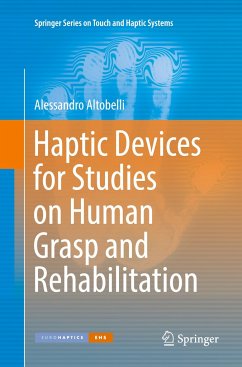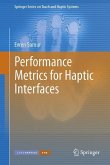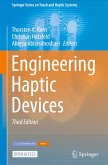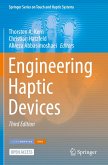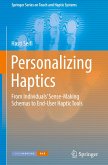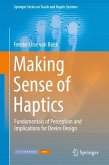This book presents a new set of devices for accurate investigation of human finger stiffness and force distribution in grasping tasks. The ambitious goal of this research is twofold, the first is to advance the state of the art on human strategies in manipulation tasks and provide tools to assess rehabilitation procedure and the second is to investigate human strategies for impedance control that can be used for human robot interaction and control of myoelectric prosthesis.
Part one describes two types of systems that are able to achieve a complete set of measurements on force distribution and contact point locations. The effectiveness of these devices in grasp analysis is also experimentally demonstrated and applications to neuroscientific studies are discussed. In part two, the devices are exploited in two different studies to investigate stiffness regulation principles in humans. The first study provides evidence on the existence of coordinated stiffening patterns in the fingers of human hands and establishes initial steps towards a real-time and effective modelling of finger stiffness in tripod grasp. The second study presents experimental findings on how humans modulate their hand stiffness whilst grasping objects of varying levels of compliance.
The overall results give solid evidence on the validity and utility of the proposed devices to investigate human grasp properties. The underlying motor control principles that are exploited by humans in the achievement of a reliable and robust grasp can potentially be integrated into the control framework of robotic or prosthetic hands to achieve a similar interaction performance.
Part one describes two types of systems that are able to achieve a complete set of measurements on force distribution and contact point locations. The effectiveness of these devices in grasp analysis is also experimentally demonstrated and applications to neuroscientific studies are discussed. In part two, the devices are exploited in two different studies to investigate stiffness regulation principles in humans. The first study provides evidence on the existence of coordinated stiffening patterns in the fingers of human hands and establishes initial steps towards a real-time and effective modelling of finger stiffness in tripod grasp. The second study presents experimental findings on how humans modulate their hand stiffness whilst grasping objects of varying levels of compliance.
The overall results give solid evidence on the validity and utility of the proposed devices to investigate human grasp properties. The underlying motor control principles that are exploited by humans in the achievement of a reliable and robust grasp can potentially be integrated into the control framework of robotic or prosthetic hands to achieve a similar interaction performance.

